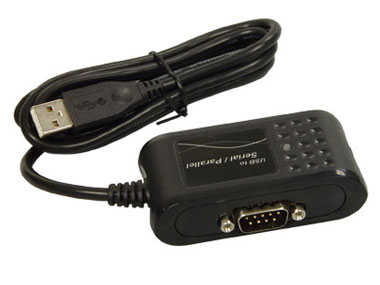

The main difference between the serial and parallel interfaces is how they transmit data. What is the difference between parallel and serial interfaces? What DisplayPort cable do I need for 165Hz?.What DisplayPort cable do I need for 144Hz?.Is it better to use HDMI or DisplayPort?.How do I get HDMI to DisplayPort to work?.What is the difference between serial communication and parallel communication?.What is the difference between parallel and serial interfaces?.Although for older personal computers (PCs) and laptops, a USB-to-parallel adapter is available for parallel printers or other peripheral devices having a parallel interface. In fact, several manufactures have completely excluded the parallel interface. The ECP mode has an 8-bit bidirectional interface, which uses DMA and can provide up to 2.5 MBps of bandwidth.Today, the universal serial bus (USB) has replaced the parallel port. The EPP mode has an 8-bit bidirectional interface, which transmits data up to of 500 KBps to 2 MBps. The byte mode is bidirectional, which transmits data eight bits at a time using one data line. It is used for enhanced printer status allowing the device to transmit data four bits at a time. The nibble mode is bidirectional, which allows four successive bits to be transmitted using a single data line. The compatibility is unidirectional and is used mostly for printers. The five modes of operation are extended capability port (ECP mode), enhanced parallel port (EPP) mode, byte mode, nibble mode and the compatibility (Standard Parallel Port or SPP) mode. With the IEEE 1284 standards, five modes of operation were specified to support data transfer in the forward direction, backward direction or bidirectionally. When the IEEE 1284 standard was introduced in 1994, the length of cables, logic voltages and interfaces was standardized. Additional parallel ports are typically labeled LPT1, LPT2, etc. The BPP is generally used for fast data transmission over small distances.
#What is a parallel serial port zip
The bidirectional parallel port (BPP) could communicate with several peripheral devices such as scanners, zip drives, hard discs, modems and CD-ROM drives. Later the parallel port was bidirectional and used for input devices as well as printers.

This parallel port could only transmit data but not receive it. The first parallel interface port for printers was made for the Centronics Model 101 (introduced in 1970), which transmitted data eight bits at a time. Originally parallel ports were intended for printers. Generally there are additional wires regulating signals to specify when transmitting or receiving data is available. To ensure that data integrity is maintained, the IEEE 1284 set standards for the connector, interface and cable.The parallel port transfers one bit of data on each of two wires, which increases the data transfer rate (DTR). Each mode must support data transfer in the forward direction, backward direction or bidirectionally. The five modes of operation were specified as ECP mode, EPP mode, byte mode, nibble mode and compatibility mode. It is utilized for non-printer peripherals such as network adapters or disc drives.Īlso in 1994 the Standard Signaling Method for a Bi-directional Parallel Peripheral Interface for Personal Computers (IEEE 1284) standard was executed to avoid issues of incompatibility with the newer diverse parallel port hardware. It is like EPP but uses direct memory access (DMA). The ECP also supports an 8-bit bidirectional port. The port is used for newer models of printers and scanners.

The enhanced parallel port (EPP) was quite a bit faster than older parallel ports, with transfer speeds of 500 KBps to 2 MBps. In 1994 two new types of parallel ports were introduced - the enhanced parallel port (EPP) and the extended capabilities port (ECP). The PS/2 was a bidirectional parallel port (BPP), which could simultaneously transmit and receive eight bits of data. In 1987, the introduction of PS/2 connected other peripheral devices such as mice and keyboards. The standard for the unidirectional printer port was the standard printer port (SPP) or normal port developed in 1981. The parallel port was designed to be used with printers and could transfer only a total of 300Kbits/sec. It was introduced by CentronicsData Computer Corporation in 1970. Originally the parallel port was unidirectional and transmitted eight bits of data at a time down multiple strands of copper cable. The recommendation from Hewlett-Packard is a maximum of 10 feet. If the cable is too long, the integrity of the data can be lost. The data is transmitted over a parallel cable extending no more than the standard 6 feet. A parallel port is a type of interface on a personal computer (PC) transmitting or receiving data to a peripheral device such as a printer.


 0 kommentar(er)
0 kommentar(er)
